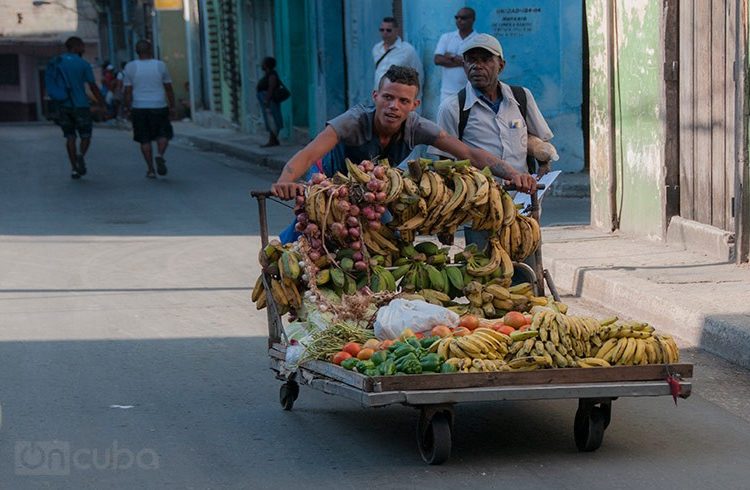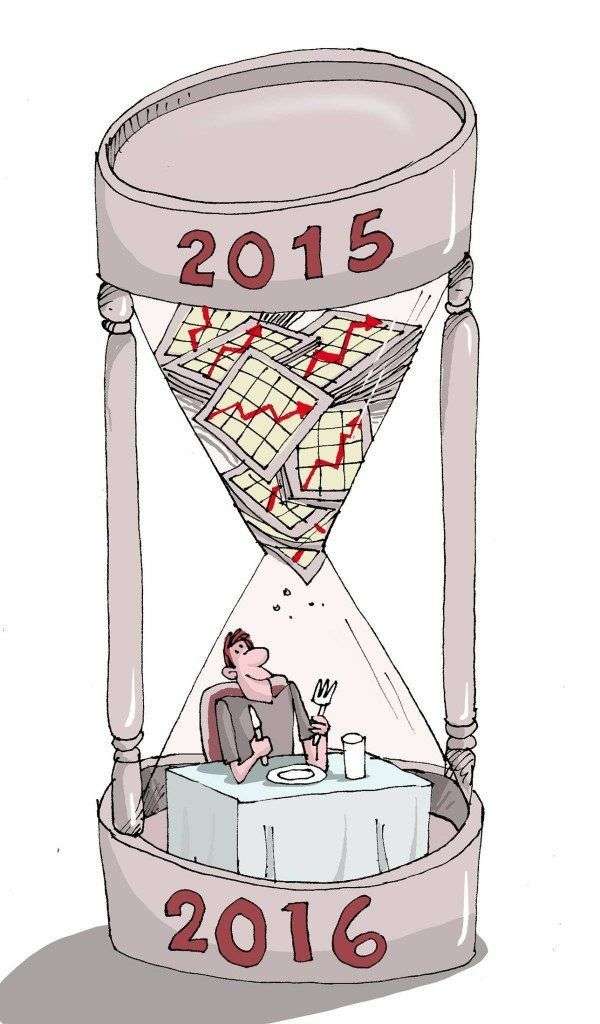After growing 4{bb302c39ef77509544c7d3ea992cb94710211e0fa5985a4a3940706d9b0380de} in 2015, after 1{bb302c39ef77509544c7d3ea992cb94710211e0fa5985a4a3940706d9b0380de} in 2014, the Cuban economy is projected to grow 2{bb302c39ef77509544c7d3ea992cb94710211e0fa5985a4a3940706d9b0380de} in 2016.
Reverting to a rate of growth lower than 3{bb302c39ef77509544c7d3ea992cb94710211e0fa5985a4a3940706d9b0380de} is not the best news, even when this growth is after the best rate of growth that the national economy has reached in the last six years.
It’s also logical to think that this growth of 2{bb302c39ef77509544c7d3ea992cb94710211e0fa5985a4a3940706d9b0380de} will influence the improvement plans for the country, by reducing the total product available in 2016, as much for consumption as for investment.
This rate of growth will be achieved in a complex environment with a mixed meaning for the national economy.
On one hand the International Monetary Fund anticipates that the global economy will shrink. In our region, the countries that have led the growth for years find themselves stagnating.
For Cuba, the political events in Venezuela, Brazil, Argentina and the weak economic performance of the first two aforementioned countries have become the biggest threats in the short and medium term given their sizeable presence in the Cuban foreign market.
In the case of Venezuela, its role in asset trading, fundamentally in oil supply (approximately 100,000 barrels a day) and its significant role in earnings from the service industry (which today makes up 70{bb302c39ef77509544c7d3ea992cb94710211e0fa5985a4a3940706d9b0380de} of our export earnings), makes it a case to which Cuba is very sensitive. Moreover, alternatives in the short-term term are hard to find.
The situation is not comparable to the one Cuba found itself in at the beginning of the 1990s. Not only because the level of dependency is substantially less than that with the Soviet Union, but also because our country today has a more diverse economy, with new sectors (tourism and biotechnology being the most evident) that can help offset any negative impact.
GDP growth
However, this international equation also has a positive part, in which first place is undoubtedly the successful debt renegotiation that Cuba has managed over the last few years, in particular with the Paris Club. This should allow the country, little by little, to gain access to new lines of credit.
“The total estimated debt of Cuba to the members of the Paris Club runs to USD$11.1 million, a fall from the previously reported figure of USD$15 million above all because of the dollar’s strength against other currencies. All the loans were denominated in Euros and other currencies.
Interest is written off until 2020 and after will only be 1.5{bb302c39ef77509544c7d3ea992cb94710211e0fa5985a4a3940706d9b0380de} of the total remaining debt.
Repayment is structured over 18 years and annual repayment will increase gradually from 1.6{bb302c39ef77509544c7d3ea992cb94710211e0fa5985a4a3940706d9b0380de} of the USD$2,600 million owed in total – some USD$40 million – in 2016, up to 8.9{bb302c39ef77509544c7d3ea992cb94710211e0fa5985a4a3940706d9b0380de} in 2023.
However, if Cuba does not honour the agreement by 31 October of every year, it will be subject to an additional 9{bb302c39ef77509544c7d3ea992cb94710211e0fa5985a4a3940706d9b0380de} interest until the debt is settled, in addition to the interest accrued on the overdue portion of the debt.”
The beginning of the re-establishing of relations with the United States also constitutes a positive element for the international situation, even when the Blockade makes it impossible for the country to receive investment from the US. However, the progress achieved in the diplomatic field has had a direct impact in the perception of Cuba in many countries and companies all over the world and has caused an increase in the number of Americans arriving to the Island.
Perhaps the most evident test regarding the change in the performance of the Cuban economy and its prospects is demonstrated in the report written by the risk advisory agency Moody’s which changed its evaluation of the Cuban economy from positive to stable.
There is the paradox. While the international perception of the country’s economy is changing favourably, a group of internal factors have become objective and subjective obstacles to the desired growth.
Some of them are of structural origin, like the persistent low rate of investment (7,841 million for 2016, 12{bb302c39ef77509544c7d3ea992cb94710211e0fa5985a4a3940706d9b0380de} below the GDP at constant prices); the fluctuations in foreign exchange and hard currency; the weak incentives to productive forces – despite the rise in the average wage (which will rise to 653 pesos and in state enterprises it will rise to 700 pesos in 2016); some prices that significantly reduce the population’s capacity to consume and limit also limit their possibilities to save; and also institutions and regulations that do not allow a closer integration of the non-state sector to the dynamics of the national economy.
The liquidity (in foreign currency) available in 2015 was a key factor in this growth and it seems that it will be once more in 2016. It will confirm the national economy’s dependence on imports (17 cents to produce 1 peso of GDP), but it also tells us of the strategic importance and the great opportunity that exists to reduce this dependency with national production that comes from all the economic actors.
It also alerts us to the necessity to export, which requires, learning, financing and technology; as well as a regulatory body that incentivises exportation, not just in state businesses but also in all players within the Cuban economy which logically included the non-state sector, cooperatives, and the self-employed.
And in a way it reminds us that Foreign Direct Investment (FDI) should be incentivised further as in 2014 that the participation of FDI in the exportation of goods was over 60{bb302c39ef77509544c7d3ea992cb94710211e0fa5985a4a3940706d9b0380de} and the trading balance of these companies was 700 million dollars in the positive.
A greater stimulation of the DFI could become a factor that compensates the financial restrictions and further boosts the country’s exportations. The results of 2014 confirm this.
What to do in 2016?
In my opinion there should be a substantial increase in Foreign Direct Investment (FDI) in 2016 and with that the negative factors that determine a growth of 2{bb302c39ef77509544c7d3ea992cb94710211e0fa5985a4a3940706d9b0380de} in 2016 could, at least in part, could be mitigated.
It is also necessary to give weight to the idea that small and medium-sized foreign investment. These investments that get projects at a local level or complete production chains off the ground generate goods and services for the internal and exportation market and can also be very favourable to the plans for growth, employment and equity.
New forms of ownership, where local government, state and non-state sector enterprises acting together, can become small motors which could revitalise our territories and could contribute to a global growth of our national economy.
Another indisputable growth factor that can be boosted is tourism. In 2015 three and a half million people visited Cuba, a growth of 17.4{bb302c39ef77509544c7d3ea992cb94710211e0fa5985a4a3940706d9b0380de} from 2014 and which, despite the lack of appropriate infrastructure (which extends from overstretched airports to the difficulty of hiring a car), has recouped a key role in the economy.
The US market is beginning to take on a singular significance. During 2015 the arrival of American tourists (rather than Cubans resident in the USA) grew from 147,000 visitors to 90 000 in 2014 (a growth of 75{bb302c39ef77509544c7d3ea992cb94710211e0fa5985a4a3940706d9b0380de})
The possibility that the US Administration could introduce greater flexibility or could even lift the existing ban on travelling to Cuba as a tourist raises the expected level of visitors to half a million in the short term and around 2 million in a couple of years.
Three events have added to the possible tourist boom: the agreement regarding the establishment of regular flights to Cuba from the USA, which could reach 120 daily (20 of them from Havana) from the beginning of the operations with the corresponding fall in ticket price, in addition to the opening of the Ferry route and the beginning of cruise-ship tourism (90 stopovers between December and April and no less than 400,000 passengers).
These thee arrival routes could ostensibly raise the number of tourists in Cuba in 2016 with a significant impact on the level of demand. If properly utilised, this demand could strengthen the national industry, could rewrite the role that the sector had in the 90s when it brought about the linking of productive forces that allowed our industrial apparatus to grow and become more dynamic.
The earnings produced by tourism can also act as a guarantee for obtaining new sources of credit in the short term which will bring a breath of fresh air to the national economy.
It is also necessary to make sure that non-state entities have a favourable environment in which to develop that means that they can be incorporated in a dynamic and functional way into the growth and development efforts.
The sector that now employs 27{bb302c39ef77509544c7d3ea992cb94710211e0fa5985a4a3940706d9b0380de} of the country’s work force is the self-employment sector, which equates to half a million people (30{bb302c39ef77509544c7d3ea992cb94710211e0fa5985a4a3940706d9b0380de} of whom are young adults and 30{bb302c39ef77509544c7d3ea992cb94710211e0fa5985a4a3940706d9b0380de} of them are women). Within areas such as hospitality and gastronomy the self-employment sector has demonstrated the level to which it can work with State efforts – today it makes up 8{bb302c39ef77509544c7d3ea992cb94710211e0fa5985a4a3940706d9b0380de} of the earnings to the State’s budget and has ample opportunity to contribute even more.
For this to happen, however, it needs better operating conditions, from the possibility of gaining access to wholesale markets (thus necessity) through to boosting its impact on the economy and in society far postponed despite its obvious by expanding its business environment to include more complex technological sectors which would complement the state sector’s capacity through the generation of skilled employment and would encourage professionals to stay in our country, in place of the current tendency to emigrate.
2016 will be a tense year, the growth prognostics are modest but Cuba has the possibility to keep growing, including passing the predicted 2{bb302c39ef77509544c7d3ea992cb94710211e0fa5985a4a3940706d9b0380de} if we manage to create an opportune environment to better take advantage of our capacity. First of all by having an educated and entrepreneurial population, and also if the opportunities that foreign entrepreneurs identify in our economy are made into reality and become good businesses.











